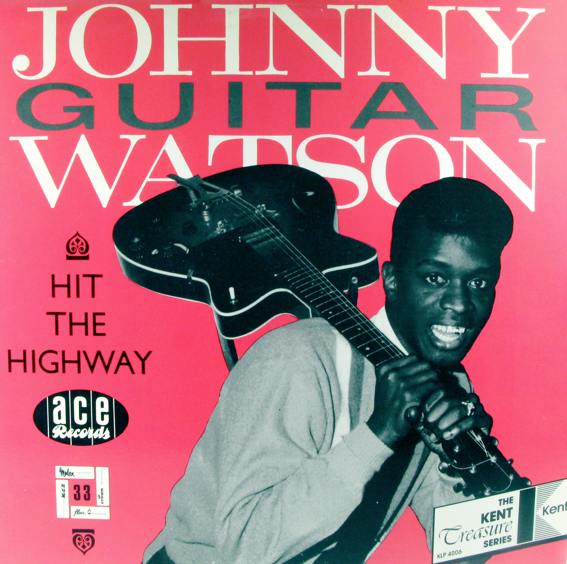Talkin' Blues: The Visionary, Pioneering Soloing Style of Johnny "Guitar" Watson

A mere decade after T-Bone Walker established the template for electric blues guitar in the mid Forties, the sound of the instrument was already beginning to evolve into something louder, faster and more out of control. On the cutting edge of guitar mania was a 17-year-old lad from Los Angeles known as Young John Watson, a player whose ferocious, no-boundaries style heralded the coming of age of the first generation of guitarists to be raised on electricity.
Watson burst out of the gate in 1954 with “Space Guitar,” an instrumental that was clearly inspired by Gatemouth Brown’s 1953 release “Boogie Uproar,” which we looked at in last month’s column.
Watson couldn’t rival his mentor’s technical skills, but he countered with unbridled attitude, employing sudden showers of reverb, off-the-cuff stops and starts, song quotes and wolf-whistle interludes along with biting blues riffs similar to the excerpt in FIGURE 1 (for all examples, capo at the third fret and pick with bare thumb and fingers).
“Space Guitar” didn’t make the charts, but it left no doubt that Watson was a guitar hero in the making.
In addition to his outrageous guitar persona, Watson was also an exceptional pianist and powerful singer whose vocal style provided the template for an even younger Etta James. In 1956, now known as Johnny “Guitar” Watson, he released the riveting slow blues vocal/guitar epic “Three Hours Past Midnight” (a track that Frank Zappa, no less, cited as his all-time favorite).
As on “Space Guitar,” Watson’s fills and solo veer between high- energy, rhythmically irregular note clusters and jazzier melodic inventions. FIGURE 2 (also performed fingerstyle and with a capo at the third fret) is a chorus in a similar style. The chromatic phrase in bar 4 leading up to the IV chord is a particular Watson trademark.
Like fellow fingerstyle, capo-clamping stylists Gatemouth Brown and Albert Collins, Watson possessed the holy grail of blues guitar: an instantly recognizable touch.
His dry, jagged attack stood diametrically opposite the velvet caress of such peers as B.B. and Albert King. Watson’s sound and phrasing are virtu- ally impossible to duplicate, but by attempting to do so, we learn a great deal about style, in- tensity and thinking far, far outside the box.
Get The Pick Newsletter
All the latest guitar news, interviews, lessons, reviews, deals and more, direct to your inbox!
She wowed Sonny Landreth and Carlos Santana called her the “future” – Erja Lyytinen shares her 6 go-to slide licks for unlocking more expressive soloing
“He combined the passion of Gary Moore with riffs inspired by Zeppelin and Deep Purple, plus unexpected melodic twists like Ritchie Blackmore”: He was one of ’80s rock’s great journeymen – and his searing hot lead work inspired Marty Friedman
